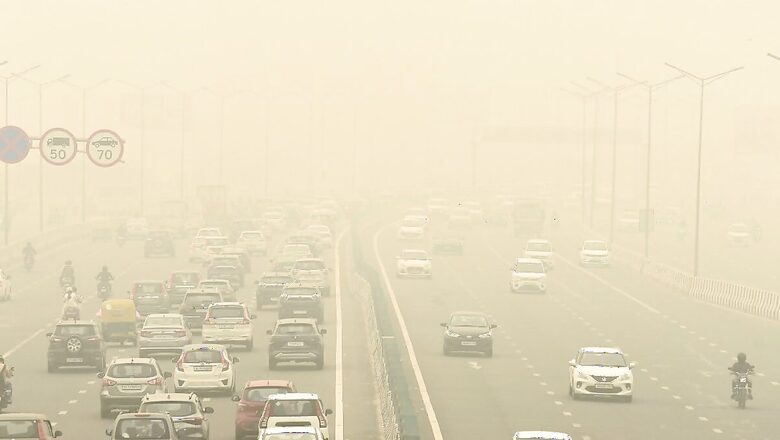
views
A day after the air quality in the national capital plummeted to severe levels, it continues to deteriorate amid unfavourable weather conditions. The night temperatures have dropped and calm surface winds prevail, creating conducive conditions for the high level of pollutants to remain suspended near the surface for long hours and make the air toxic.
Delhi reported an Air Quality Index (AQI) of 427 on Thursday evening for the first time this winter, which surged past 500 (Very Severe) on Friday morning as per the air quality early monitoring system. It remained around 550 for most part of the day with dangerous levels of PM2.5 and PM10 in the air triggering a health warning.
A thick blanket of smog enveloped the entire region, reducing visibility to less than 500 metres at the Indira Gandhi International Airport in Delhi. Stage three of the Graded Response Action Plan (GRAP) has already been enforced across the capital.
SUDDEN SPIKE IN FIRE COUNTS OVER LAST TWO DAYS
The crop fires too have shot up across the neighbouring states. As many as 4,878 fire counts have been reported in the last two days over Punjab, Haryana, Uttar Pradesh, Rajasthan as well as Madhya Pradesh. According to the satellite data monitored by Indian Agricultural Research Institute (IARI), 2,194 fire counts were detected on Wednesday — 1,668 in Punjab, 41 in Haryana, 37 in UP, 40 in Rajasthan and 401 in Madhya Pradesh.
Even though the total fire counts have fallen compared to last year as per the data, there has been a sudden increase over the last few days. A year-to-year comparison shows that as many as 18,523 burning events have been detected in the six states between September 15 and November 2, compared to 26,201 recorded last year during the same period.
Despite an initial spike in October, the total number of crop fire events detected by satellites has fallen from 17,846 to 11,262 in Punjab, and 2,083 to 1,344 in Haryana. However, the fire counts have shot up considerably in Madhya Pradesh from just 972 in 2022 to 3,905 this year, 777 to 1,066 in Uttar Pradesh, and 345 to 944 in Rajasthan. Sangrur (1,657) in Punjab has now surpassed Amritsar (1,310) with the highest number of crop fires, followed by Tarn Taran and Ferozepur. In Haryana, Fatehabad, Ambala, Jind and Kaithala remain the biggest contributors.
WHAT LED TO A SUDDEN DROP IN AIR QUALITY?
The national capital battles very poor quality of air all through the year. However, it is exceptionally bad in winters when temperatures drop and winds are generally calmer. This is because of a sudden fall in the Ventilation Index, which basically indicates how well the atmosphere disperses smoke or other pollutants any given day.
The Ventilation Index changes daily based on the atmospheric conditions. An index lower than 6,000 m2/s with average wind speed less than 10 kmph is bad for air quality, because this means the pollutants will not rise higher up in the air and will remain suspended near the surface creating dense smog. At present, the predominant surface winds are slow and likely to be coming from Northwest-northeast with 4-8kmph over Delhi, which is extremely unfavourable for dispersion of pollutants.
The latest forecast from Indian Institute of Tropical Meteorology (IITM), Pune, suggests the air quality is expected to remain ‘Severe’ for the next few days. This is disconcerting especially when the festive season has begun across North India and Diwali is just a week away. The burning of firecrackers further leads to a spike in the pollution levels – turning the air toxic than ever before.
59% POLLUTION DUE TO VEHICLES, INDUSTRIES
According to an emission inventory prepared by scientists from the Indian Institute of Tropical Meteorology (IITM), Pune, in 2018, more than half of Delhi’s pollution is caused by the transport and industrial sector. The vehicular pollution mainly accounts for 41 per cent of it followed by 18 per cent due to the industrial emissions. The contribution of both sources have intensified over the years due to increase in the number of vehicles.




















Comments
0 comment